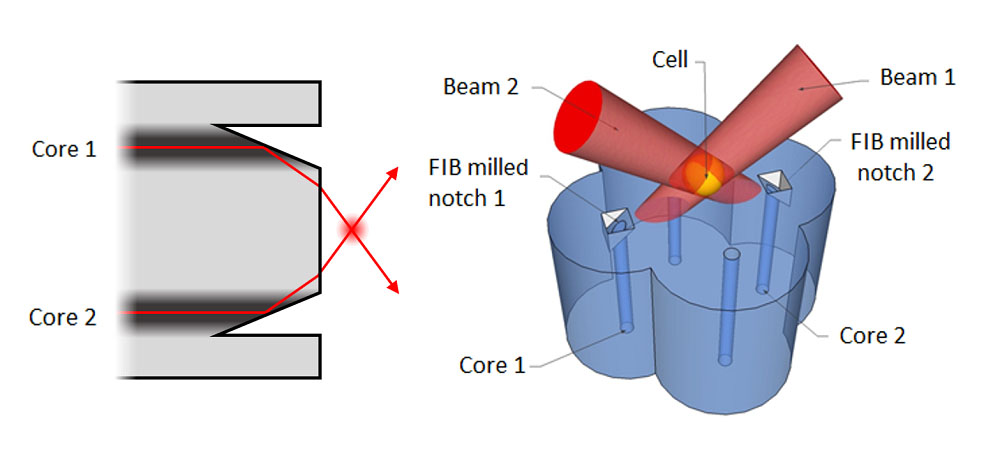Optical trapping of single cells

In collaboration with the Institute of Biological Chemistry, Biophysics and Bioengineering, Dr MacPherson and his group in IPaQS have developed a novel single fibre optical trap capable of holding single biological cells. Optical trapping (or tweezing) is a well-established techniques used for positioning and manipulating cells in microscopy, but this traditionally requires the microscope to be modified to include the trapping optics within the microscope itself. The developed fibre trap removes this constraint by incorporating all the necessary optics onto a single multi-core fibre. Focussed Ion Beam machining is used to form end facet steering mirrors to redirect the exit beams thereby forming the required optical trapping conditions in the overlapping region. Cells with diameters ranging from 5 to 25 micrometers have been successfully held and studied under a Raman microscope using this technique.